Reciprocal links—yep, I said it. We’re going back all the way to the days of old-school SEO tactics that still have marketers drawing battle lines. If you’ve ever exchanged links with another site (“I’ll link to you if you link to me”), you’ve done a reciprocal link.
They’ve been part of the SEO toolkit for years, but people’s views on them are all over the place. Some marketers swear that they help develop relationships and increase rankings, while others treat them as an old-school tactic that will get you penalized by Google.
So, what’s the real deal? Do reciprocal links work for your site’s SEO, or can they harm it in the long run? Here’s the good, the bad, and the Googley of it all.
What Are Reciprocal Links?
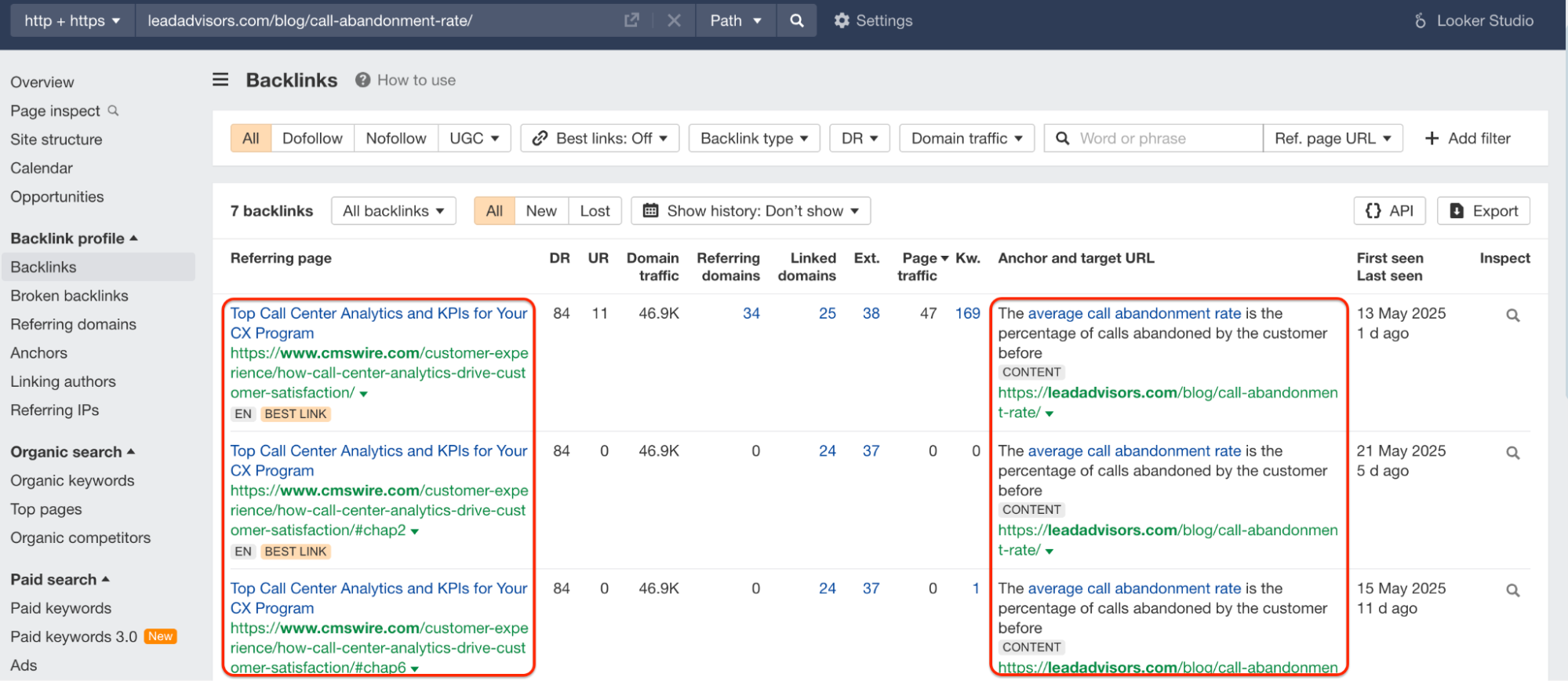
Reciprocal links occur when two websites mutually agree to link to one another. Think of it as a friendly handshake between two websites. For instance, if you have a link on your blog to a partner’s website, and they have returned the favor by linking to your site on theirs, that is a reciprocal link. Simple, right?
These are generally the kind of links you get in a reciprocal relationship, such as when you say, “Hey, would you please share my content? I’m going to share yours.” This sort of exchange seems benign (and sometimes it is!), but before you try that in your SEO Funnel, you’ll want to know it inside out.
Types of Links: What’s the Difference?
Type of Link | What It Is | How It Works | SEO Impact |
Reciprocal Links | Two websites are linking to each other. | You link to a partner’s site, and they link back to you. | It can be helpful if used naturally and with relevant, high-quality content. |
Link Exchanges | A larger or more organized form of mutual linking. | Often part of a campaign or network of websites that swap links systematically. | Risky. Google’s algorithm may see this as manipulative, hurting your site’s ranking. |
Natural Backlinks | Links are earned organically because someone found your content valuable. | No agreements, no trading—just great content that others want to share. | Highly valuable. Considered a trust signal by search engines and improves domain authority. |
Visual Time: How Reciprocal Linking Works for Websites
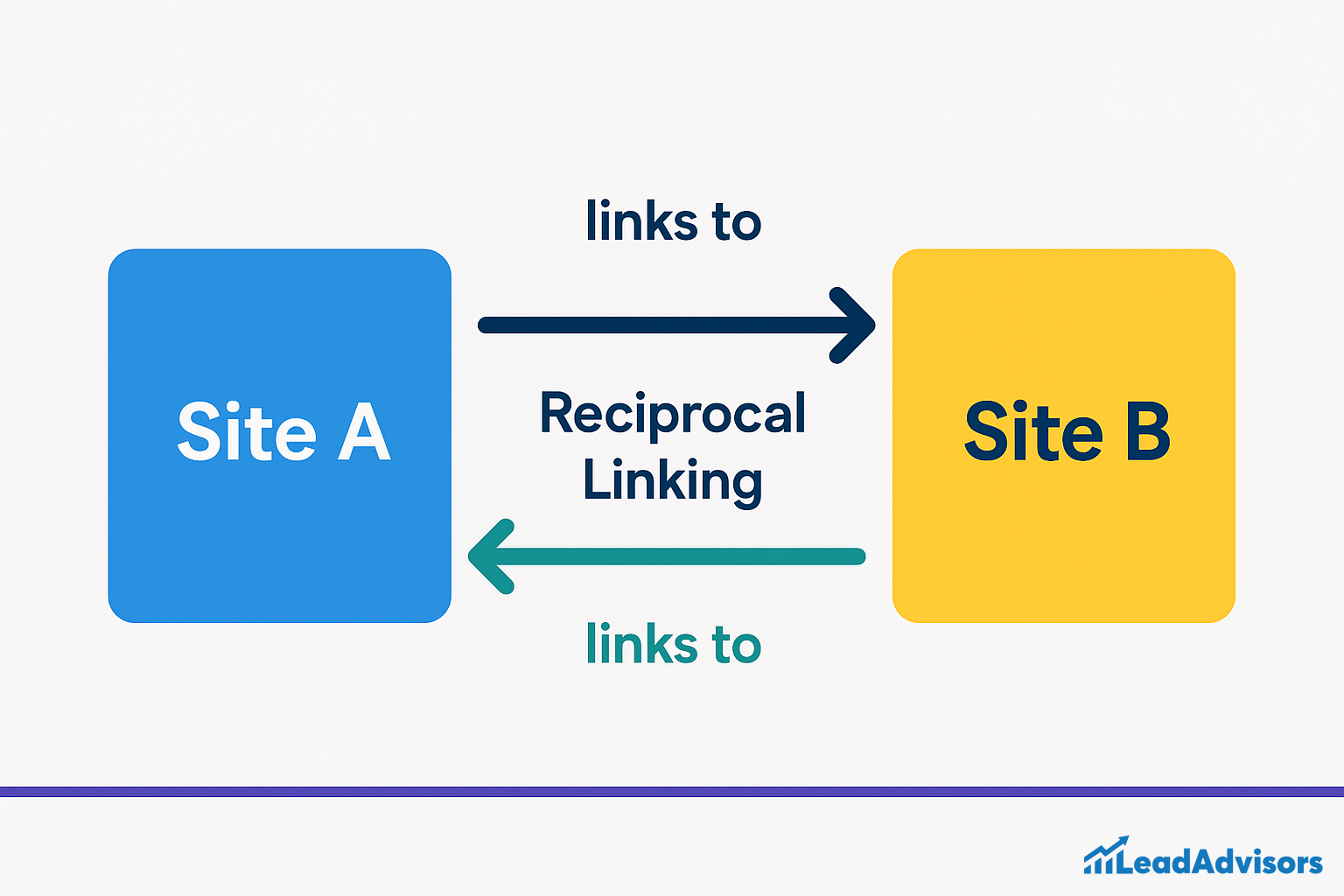
Are Reciprocal Links Good or Bad for SEO?

Ah, the age-old question – is linking back and forth between two websites still suitable for your SEO profile? Well… as with most things in SEO, the answer is: it depends.
Let’s deconstruct it as if we were chatting over coffee.
The Good Side of Reciprocal Links
When used with thought and consideration, reciprocal links can improve your site’s standing. Here’s how:
- They enhance the user experience by directing readers to more useful or relevant content on trustworthy sites. Think of it as, “Hey, you’ll love this too!”
- They drive mutual traffic. Site A linking to Site B and vice versa means both sites can cash in on the other’s audiences. It’s exposure all around.
- They help build authority when relevant. Google’s algo likes context and quality. So if two authoritative, niche-relevant sites link each other editorially, that can be a good thing.
The Not-So-Good Side
And this is the part where it gets a little bit tricky (and also where reciprocal links get a bit of a ‘bad name’):
- They can look like link schemes. If you exchange links solely for the sake of SEO and do not consider relevance or quality, Google may view your actions as manipulative.
- There’s a real risk of penalties. Google’s Webmaster Guidelines warn against “excessive link exchanges” in particular. Yep, that’s a red flag.
- Abusing it may hurt your site’s trustworthiness. If your site links to a bunch of irrelevant or low-quality […] sites to get reciprocal links, it will dilute your credibility quickly.
The Nuance: What Google Really Says
So, where does Google stand? As per Google’s Link Scheme guidelines, they also state: Excessive or manipulative reciprocal linking can negatively impact rankings or get penalized. However, linking when it comes up naturally and in a relevant manner to great sites? That’s totally fine.
In reality, an Ahrefs study discovered that 73.6% of high-authority domains have some form of reciprocal link. That teaches us that reciprocal linking isn’t necessarily a bad thing; it’s how you do it.
When Reciprocal Links Make Sense
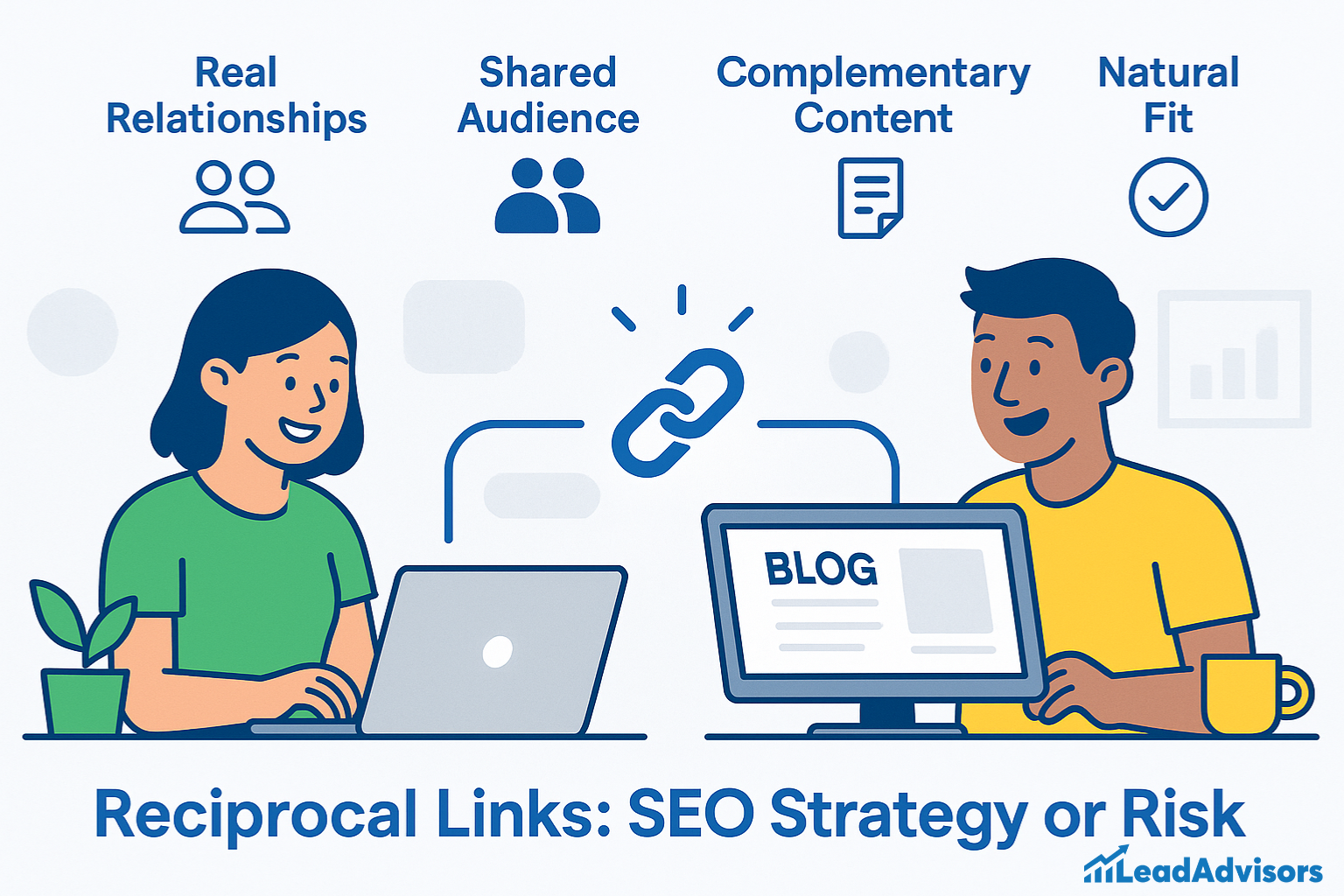
Let me tell you a quick story.
A few months ago, I penned a blog post about remote work hacks. And in that post, I threw out a productivity tool I really use and love. The team behind that tool read that post, loved the shoutout, and ended up adding my blog to their “Best Resources for Remote Teams” page.
Boom. That’s a reciprocal link (and it occurred entirely naturally).
This kind of link swap? That’s the good kind. The good kind of obvious, but also the bad kind. Let’s unpack why.
1. It Comes From Real Relationships
Reciprocal linking, whether in the form of a collaboration, guest feature, or simply recognizing the value of another domain, often appears when a connection already exists from the start. Perhaps you co-host a webinar. Or maybe you write about someone on your blog, for instance, because their content contributed to your development. These are the natural, organic moments when backlinks are the most powerful.
2. The Content Complements Each Other
Here’s the thing: you’re not competing for the same rankings — you’re building each other up. If you cover sustainable fashion and another site centers on ethical manufacturing, you’re traversing different stretches of the same road. When linking to each other, that gives the reader more depth, and that’s what Google loves.
3. You Share an Audience
Just think: Would those people care about my content? Would they like mine the way I liked theirs? If the answer is yes, then that isn’t just strategic link exchange; it’s giving value for value.
It’s like if you’re sending your readers on a carefully curated tour instead of just leaving them somewhere in the middle of the internet.
4. The Links Fit the Flow of the Page
So, here’s the deal: Google knows when links are forced. But if you’re writing a thoughtful article and the link fits naturally, that’s editorial gold. Whether you’re referencing a source or elaborating upon a topic, having appropriate reciprocal links helps earn the trust of both your readers and the bots that crawl your site for search engine rankings.
So the next time you’re tempted to wonder, “Should I give them a link if they link to me?”, pause and ask:
- Does it feel natural?
- Does it serve the reader?
- Is this something I would include if I got absolutely zero in return?
If it checks those boxes, pursue it.
SEO Risks of Poor Reciprocal Link Practices
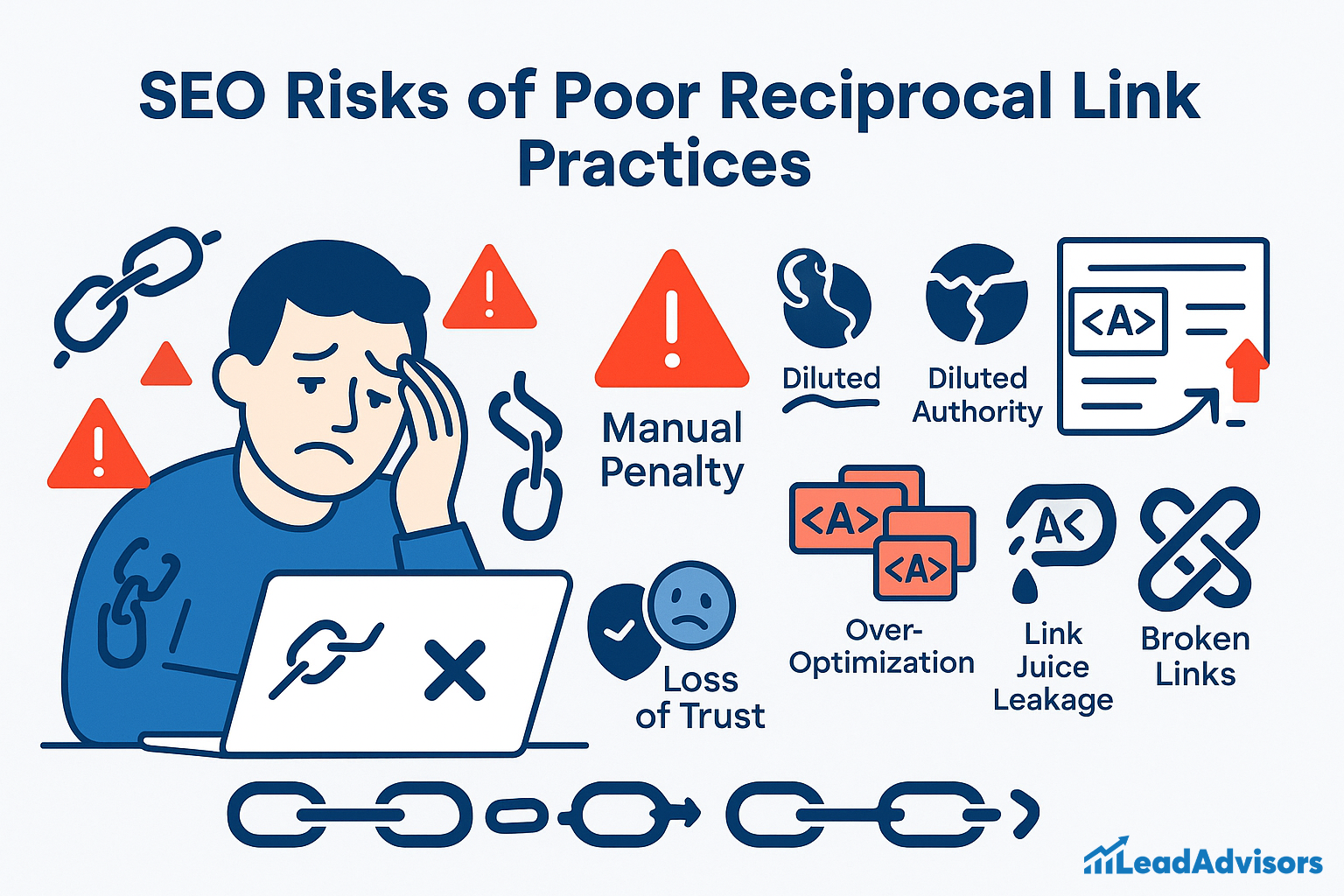
Reciprocal links can do wonders—but only if used with intent and care. When they’re not, well… things can get messy. Here’s how one small misstep can turn into a troubling SEO nightmare.
You start overdoing link swaps with irrelevant or low-quality sites
Effect:
Google starts noticing a pattern that looks artificial. It’s not about helping users—it’s about boosting rankings. That triggers the big red flag: a manual penalty. These penalties can tank your traffic and take months to recover from.
Your backlinks and outbound links look too “tidy”
Effect:
If every site you link to also links back to you, that 1:1 ratio looks suspicious. Search engines want organic diversity. This kind of perfect symmetry tells Google you’re probably exchanging links just for SEO. Result? Ranking drops across your key pages.
You link to anyone who asks, regardless of their niche or content quality
Effect:
You dilute your domain authority. Worse, your audience might notice you’re endorsing spammy or irrelevant sites. Trust and credibility with users and the algorithm erode.
You accidentally give your competitors a boost
Effect:
Not all reciprocal links are strategic. Sometimes, you give ranking power (aka link juice) to sites trying to outrank you for the exact keywords. That’s like helping someone pass you in a race you’re both running.
You always use the exact anchor text
Effect:
Search engines pick up on patterns. Using exact-match keywords every time looks manipulative. Overoptimized anchor text can make your link profile feel spammy and trigger algorithmic penalties even without a manual action.
You don’t audit or update your reciprocal links
Effect:
Outdated or broken links can damage your site’s technical SEO and user experience. Worse, if a partner site gets penalized or becomes spammy over time, your reputation (and rankings) might be hit by association.
Reciprocal links aren’t bad, but bad habits are.
If your linking strategy feels more like a numbers game than a value exchange, it’s time to rethink things.
Best Practices for Safe & Strategic Reciprocal Linking
Want more people to link back to your website without begging or making awkward deals? It starts with your content. If you’re not giving site owners a reason to care, they won’t share it—simple as that. Let’s talk about how to create content so good that other sites want to link to it without hesitation.
Focus on Creating High-Quality Content That Others Want to Link To
No one wants to exchange links with a site that offers mediocre content. If you’re going to earn natural reciprocal links and boost your search engine rankings, you’ve got to give other sites something truly valuable to link back to. This is where quality content comes in—it does the heavy lifting for you.
High-quality content attracts high-quality links. Create informative, engaging, and relevant content that other websites and industry experts will reference and link to your site because they see it as a valuable resource.
Go beyond the basics. Provide in-depth insights, original research, or innovative solutions. Offer information not easily found elsewhere. Become a go-to source for reliable information in your niche.
This helps establish your site as an authority. And attract more backlinks naturally.
Consider the relevance of your content. Target your audience and industry by addressing their specific needs, questions, and pain points to increase the chances of your content being shared and linked to by others in your field.
To ensure your content satisfies search intent (why the user is searching for this term), head to Keyword Overview.
To start, enter your keyword, select a location, and click “Search.”
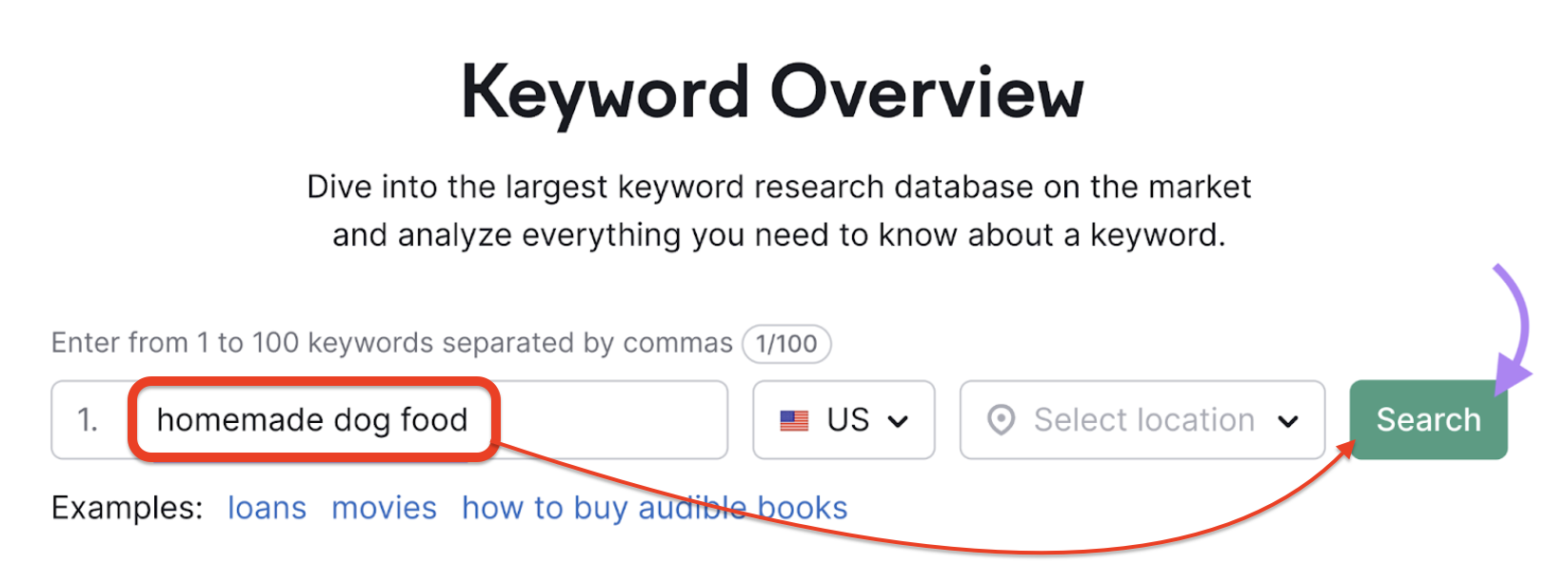
Search for homemade dog food in the Keyword overview tool. The tool will display lots of helpful information about the keyword, including search intent.

Homemade dog food has 27.1k monthly search volume, 69% keyword difficulty, informational search intent, and other data.
Use this information to optimize your content, outrank your competitors, and earn valuable backlinks.
Understand Search Intent First—Then Deliver
Before you publish anything, ask: What’s the reader actually looking for when they search this?
To figure that out, use tools like the Keyword Overview Tool. Just plug in your phrase (like “debt conolidation”), hit search, and it’ll tell you the keyword’s intent—whether people want to buy, learn, or compare.
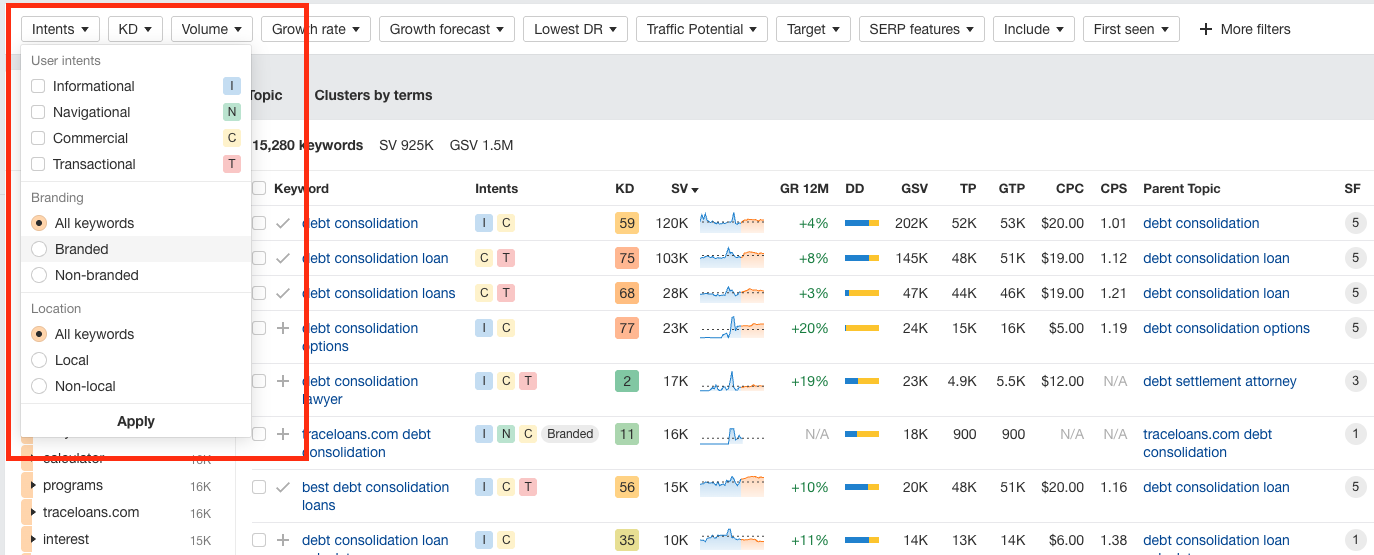
That way, you’re not just throwing content at the wall. You’re writing exactly what people want to read, which means better engagement, better backlinks, and stronger search engine rankings.
Don’t Just Link—Enhance the Experience
Let’s talk about external links—those links from your site to other sites. They’re part of the bigger picture when it comes to reciprocal link building.
When you link out, make sure it’s relevant and useful. It should support your message or give readers an extra resource that actually helps.

Think about it like this: if you were reading your post, would that link feel helpful, or forced? Use reciprocal links where it makes sense, but always aim to make the reading experience better.
Pro tip: You can monitor reciprocal links in tools like Backlink Analytics to see how your site stacks up.
Let It Flow—Use Links Naturally
Nobody likes robotic writing. So when you add links, don’t wedge them in awkwardly. They should blend into your content like they belong there.
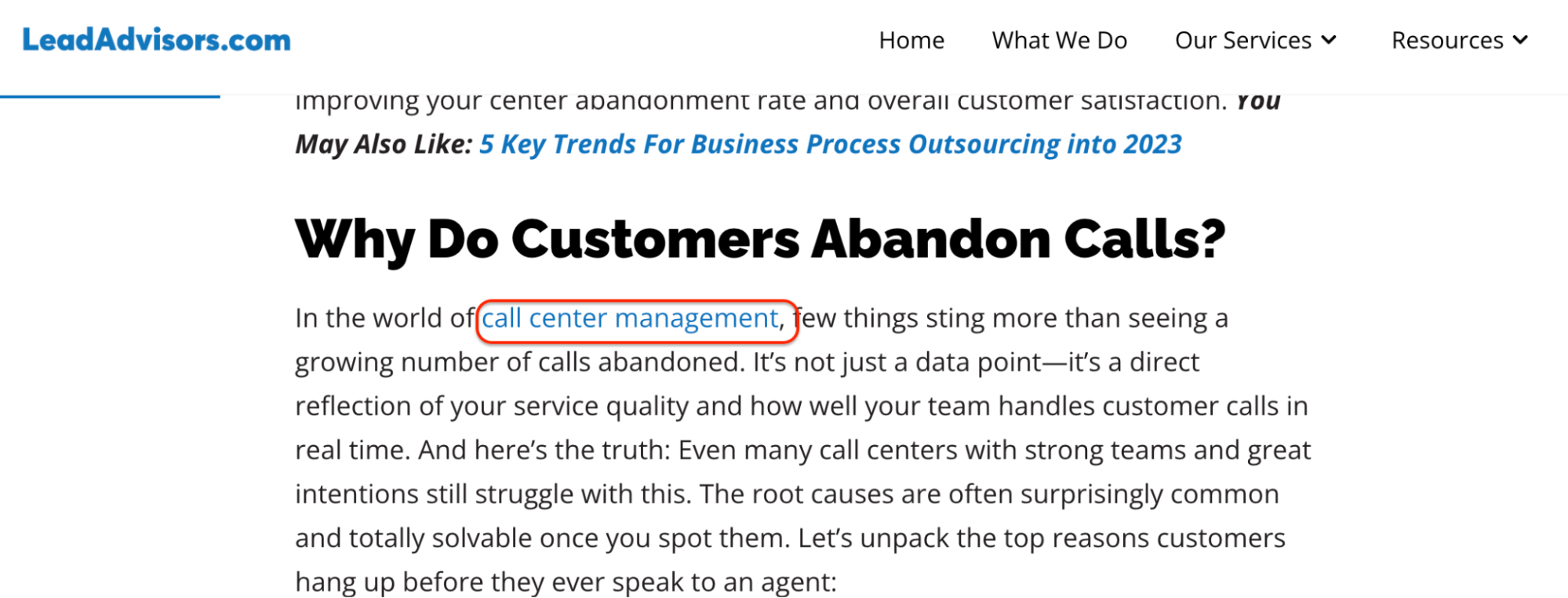
For example, if you’re writing a blog about landscaping, linking to a seasonal planting chart from a gardening website makes perfect sense. That’s a natural reciprocal link. It helps your readers and builds trust.
Just don’t fall into the trap of link schemes, where links are added purely to manipulate search rankings. That can lead to penalties.
Avoid Linking to Your SERP Competitors (Unless There’s a Really Good Reason)
Here’s a quick SEO rule: Don’t send traffic to the two websites you’re trying to outrank—unless it’s totally unavoidable.
Yes, reciprocal links can be good—but not when they’re helping your direct competitors climb above you in Google.
Ask yourself: Is linking to this competitor adding unique value for my audience? If not, skip it. Better yet, create content that does a better job and link to your resource instead.
You’re not just trying to build reciprocal links for the sake of it. You want links that serve your readers and support your SEO goals.
Get Creative with Your Anchor Text
Anchor text—that’s the clickable part of a link—deserves more thought than you think.
Don’t just say “click here.” Instead, describe what users will find when they click. That helps readers and search engines understand the context.
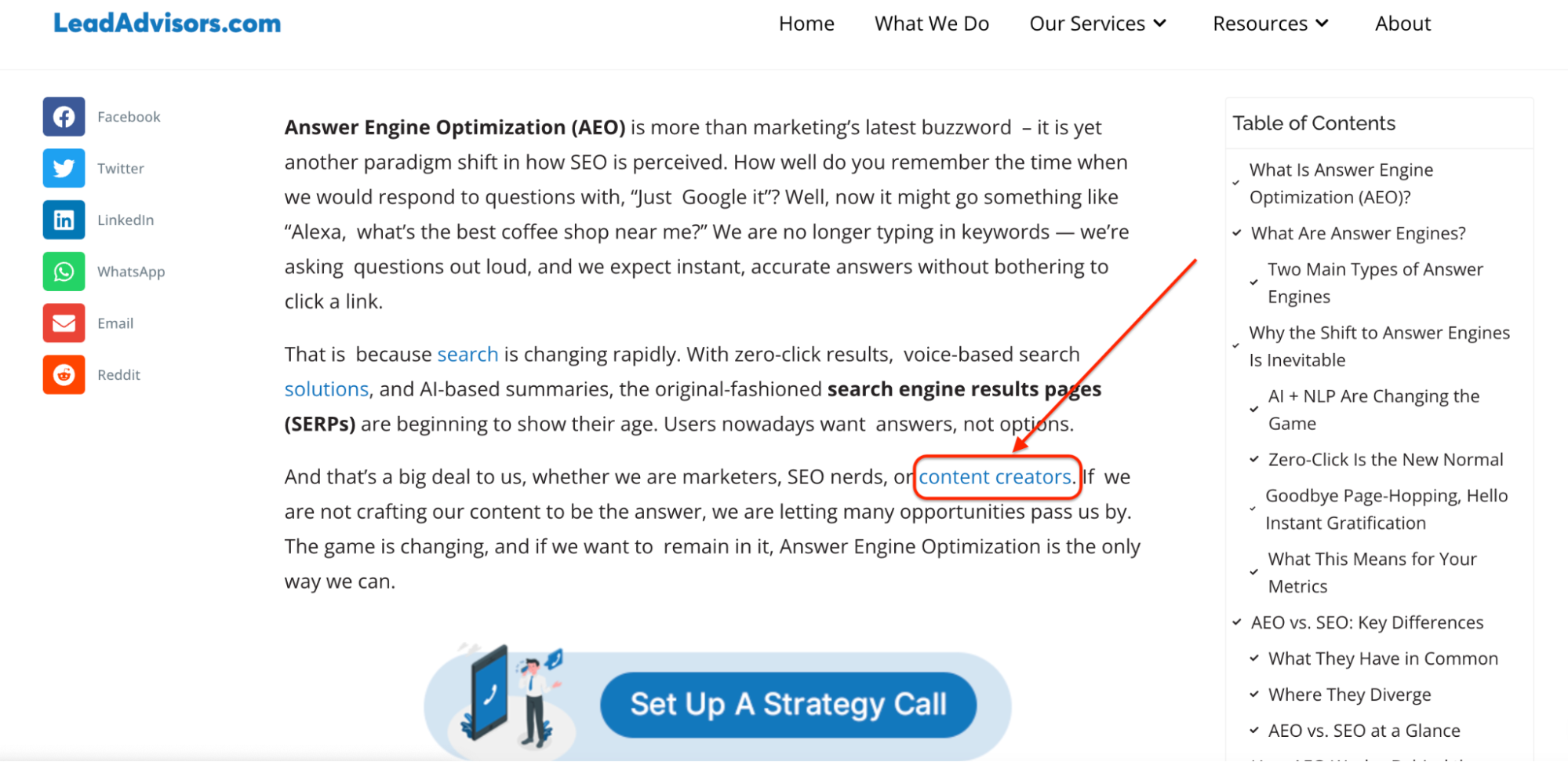
Be mindful not to use your own keyword-heavy phrases when linking to other sites. You want your site to rank for those terms, not someone else’s.
If you’re linking internally, go ahead and use the keywords you want to rank for. But when linking externally, vary your anchor text and keep it descriptive.
A Word of Caution: Don’t Overdo the Links
It’s tempting to throw excessive reciprocal linking into your blog, hoping it’ll boost SEO—but that can backfire.
When you exchange links with other sites, do it sparingly. Too many reciprocal links or overly aggressive linking can trigger alarms with Google, making it look like you’re involved in link schemes.

There’s a fine line between good strategy and spammy behavior. So keep your linking balanced and meaningful.
Think quality over quantity. Whether it’s one link or five, make sure each one earns its place on the page.
How SaaS and Niche Brands Can Use Reciprocal Links Strategically
Tactic | What It Is | How It Helps | Pro Tip |
Strategic B2B Partnerships | Link exchanges with partner tools or platforms that integrate or serve the same customer base. | Builds authority, improves UX, and strengthens business relationships. | Only link if the content is relevant and offers value to both audiences. |
Guest Posting Swaps (Done Right) | Exchanging high-quality guest blogs that include natural, contextual backlinks. | Drives traffic, shares expertise, and earns SEO trust when executed authentically. | Avoid keyword stuffing—focus on value and fit, not just backlinks. |
Ecosystem-Building (Not Competition) | Linking to complementary brands, blogs, or tools in your niche, without promoting direct rivals. | Supports users, builds a trusted brand network, and strengthens industry presence. | Think communities, not competitors—link to resources your users already love or need. |
How to Build Natural Reciprocal Links
You don’t have to beg for backlinks or join sketchy link exchange groups to make reciprocal linking work. The best way? Earn them naturally—by showing up with great content and authentic connections.
Here’s how you do it (without looking like you’re trying too hard):
Publish Link-Worthy Content
If you want other sites to link to you (and maybe even link back), you’ve got to give them something worth sharing.
- Original research – Stats, surveys, or studies that others can cite.
- Data-driven insights – Numbers and takeaways that add credibility to industry blogs.
- Visuals, tools, or guides – Think charts, calculators, infographics, or mega-guides that simplify complex topics.
Pro tip: When your content becomes a resource, people naturally link to it and often return the favor if you mention them, too.
Build Real Relationships
The best reciprocal links don’t come from cold pitches. They come from real interactions—DMs, comments, collaborations, and helping others first.
- Start conversations without asking for anything in return.
- Show up in their inboxes or feeds with genuine compliments or questions.
- Network with bloggers, influencers, and creators who speak to the same audience as you.
Think long-term friendships, not one-time link swaps.
Leverage Podcasts, Events & Co-Marketing
Whenever you collaborate with someone on a webinar, podcast, industry panel, or even a LinkedIn Live, there’s usually a natural opportunity to link to each other.
Why? Because you’re sharing platforms and audiences. The link becomes part of the recap, the resources, or even the guest bio.
And guess what? These links usually feel earned, not exchanged.
Promote Your Content Smartly
You’ve got great content—now get it in front of people who actually care.
- Email the folks or brands you’ve mentioned in your article.
- Share it in relevant online communities.
- Give shoutouts in newsletters or roundup posts.
When people see themselves in your content, they’re more likely to link back. And if they do? That’s a natural reciprocal link that feels like a thank-you, not a transaction.
How to Evaluate Reciprocal Link Requests
Not every reciprocal link request is worth your time—or your SEO reputation. Before you say yes to a link exchange, slow down and walk through this checklist to make sure it’s a win-win (not a warning sign).
- Is the site high quality?
You don’t want your site associated with spammy or low-effort content. Check their domain authority using tools like Ahrefs, Semrush, or Moz. Look at their backlink profile and trust signals. If their site looks outdated, is filled with ads, or has a high spam score, it’s a no.
- Is the content relevant to my niche?
Google favors contextual, topic-aligned links. If your site covers health tech and the owner runs a blog about interior design, it’s just not a good fit. Even if the site looks professional, a lack of content relevance can harm your SEO strategy more than it helps.
- Does this link serve my audience?
Always put your readers first. Would they actually benefit from the linked resource? If the content isn’t helpful, engaging, or trustworthy to your users, it might just add noise, and Google notices that too.
- Could this look manipulative to search engines?
Too many obvious tit-for-tat links can come across as a link scheme, especially if it’s happening repeatedly with similar anchor text or poorly written content. Ask yourself: Would this link exist if SEO didn’t exist? If the answer is no… It’s not worth it.
- Would I link to this site even without a backlink in return?
This is the golden rule. If the other site didn’t offer a link back, would you still want to mention their content because it’s genuinely good? If yes, that’s a strong green flag. If no, you’re probably better off passing on the exchange.
TL;DR:
A great reciprocal link should feel natural, helpful, and relevant. If you have to force it or second-guess it, trust your gut—it’s okay to say “no thanks.”
Tools to Monitor and Manage Reciprocal Links
Tool | What It Does | Why It’s Helpful |
Semrush Backlink Analytics | Tracks inbound and outbound links, backlink types, and referring domains. | Let’s you spot reciprocal link patterns and evaluate the quality of linking domains. |
Ahrefs Link Intersect | Compare your backlink profiles with those of other websites. | It helps you discover mutual link sources and is great for spotting reciprocal links and link opportunities. |
Google Search Console | Offers link reports for external and internal linking data. | Free and reliable tool to monitor who’s linking to you and if the links look natural. |
Link Detox Tools | Identifies toxic backlinks and flags risky linking patterns. | Helpful in evaluating whether reciprocal links are harming your SEO or triggering Google red flags. |
Monitor Backlinks | Tracks new and lost backlinks, keyword performance, and domain authority. | Keeps you updated on backlink changes and helps manage link-building campaigns strategically. |
Conclusion
So, are reciprocal links good or bad for SEO?
Like most things in digital marketing, it depends on how you use them.
When done ethically and strategically, reciprocal linking can strengthen relationships, boost traffic, and add real value to your audience’s journey. But when it turns into a numbers game or starts to feel manipulative, that’s when you risk penalties, ranking drops, and lost trust.
The key takeaway? Always lead with value.
- Link to relevant, high-quality content.
- Keep your audience’s needs at the center.
- Build authentic relationships, not artificial shortcuts.
Search engines are smart, but your readers are even smarter. Use reciprocal links to connect, not to cheat, and you’ll be rewarded with stronger SEO and a more trustworthy web presence.
Now go forth and link wisely, my friend.











